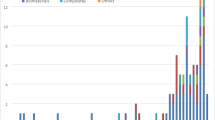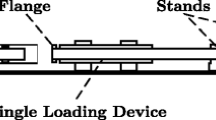Abstract
A method for rapid two-stage dynamic-dynamic tensile loading of polymers, based on a tensile Hopkinson bar apparatus, is established. In this technique, the initial incident wave and its reflection are used to load a specimen in quick succession. Consequently, the specimen is stressed, momentarily unloaded, then reloaded until fracture. By adopting appropriate assumptions, a procedure to obtain the associated stress-strain curves for such double-stage loading is formulated. These assumptions are examined experimentally and analytically to substantiate their validity. To verify the proposed approach, a relatively rate-insensitive material, LEXAN 141 polycarbonate, was subjected to two-stage dynamic tension. The stress-strain curves obtained via the procedure established were compared with results from static loading. Favorable correlation between the two indicates that the proposed technique can be applied to the study of load history effects on the dynamic behavior of polymeric materials.
Similar content being viewed by others
References
Kolsky, H., “An Investigation of the Mechanical Properties of Materials at Very High Rates of Loading,”Proc. Phys. Soc. London,62B,676–700 (1949).
Lindholm, U. S., “Some Experiments with the Split Hopkinson Pressure Bar,”J. Mech. Phys. Solids,12 (5),317–335 (1964).
Nemat-Nasser, S., Li, Y.-F., andIsaac, J. B., “Experimental/Computational Evaluation of Flow Stress at High Strain Rates with Application to Adiabatic Shear Banding,”Mech. of Materials,17,111–134 (1994).
Li, M., Wang, R., andHan, M. B., “A Kolsky Bar: Tension, Tensiontension,” EXPERIMENTAL MECHANICS,33 (1),7–14 (Mar1993).
LeBlanc, M. M. andLassila, D. H., “Dynamic Tensile Testing of Sheet Material Using the Split Hopkinson Bar Technique,”Experimental Techniques,17 (1),37–42 (Jan–Feb1993).
Nicholas, T., “Tensile Testing of Materials at High Rates of Strain,” EXPERIMENTAL MECHANICS,21 (5),17–185 (May1981).
Staab, G. H. andGilat, A., “A Direct-tension Split Hopkinson Bar for High Strain-rate Testing,” EXPERIMENTAL MECHANICS,31,232–235 (Sept1991).
Nicholas, T., “Material Behavior at High Strain Rates,”in Impact Dynamics, ed. J. A. Zukas, T. Nicholas, H. F. Swift, L. B. Greszczuk, andD. R. Curran, John Wiley, New York, 277–332 (1982).
Gong, J. C., Malvern, L. E., andJenkins, D. A., “Dispersion Investigation in the Split Hopkinson Pressure Bar,”ASME, J. Eng. Mat. Tech.,112,309–314 (July1990).
Yuan, J., Takeda, N., andWaas, A. M., “A Note on Data Processing in the Split Hopkinson Pressure Bar Tests,”Exp. Techniques,22 (5),21–24 (Sep–Oct1998).
Rao, S., Shim, V. P. W., andQuah, S. E., “Dynamic Mechanical Properties of Polyurethane Elastomers Using a Nonmetallic Hopkinson Bar,”J. Applied Polymer Science,66,619–631 (1997).
Author information
Authors and Affiliations
Rights and permissions
About this article
Cite this article
Shim, V.P.W., Yuan, J. & Lee, SH. A technique for rapid two-stage dynamic tensile loading of polymers. Experimental Mechanics 41, 122–127 (2001). https://doi.org/10.1007/BF02323114
Received:
Revised:
Issue Date:
DOI: https://doi.org/10.1007/BF02323114




